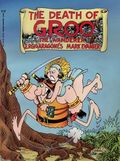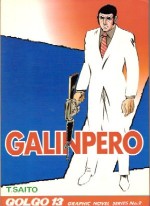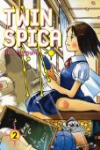
By Hal Foster (Fantagraphics Books)
ISBN: 978-1-60699-407-8
Possibly the most successful and evergreen fantasy creation ever conceived, the Sunday page Prince Valiant in the Days of King Arthur launched on February 13th 1937, a luscious full-colour weekly window onto a perfect realm of fantasy and romance. The strip followed the life and adventures of a refugee boy driven by invaders from his ancestral homeland in faraway Thule who roamed the world and rose to a paramount position amongst the mightiest heroes of fabled Camelot.
Written and drawn by unsurpassed master draftsman Harold “Hal†Foster, that noble scion would grow to manhood in a heady sea of wonderment, visiting far-flung lands and siring a dynasty of equally puissant heroes whilst captivating and influencing generations of readers and thousands of creative types in all the arts.
There have been films, animated series and all manner of toys, games and collections based on the strip – one of the few to have lasted from the thunderous 1930s to the present day (over 3800 episodes and counting) and even in these declining days of the newspaper strip as a viable medium it still claims over 300 American papers as its home. It has even made it into the very ether with an online edition.
Foster produced the strip, one spectacular page a week until 1971, when, after auditioning such notables as Wally Wood and Gray Morrow, Big Ben Bolt artist John Cullen Murphy was selected to draw the feature. Foster carried on as writer and designer until 1980, after which he fully retired and Murphy’s son assumed the writer’s role.
In 2004 the senior Cullen Murphy also retired (he died a month later on July 2nd) and the strip has soldiered on under the extremely talented auspices of artist Gary Gianni and writer Mark Schultz.
This third exquisite hardback volume reprints in glorious colour – spectacularly restored from Foster’s original Printer’s Proofs – the Sunday pages from January 5th 1941 to 20th December 1942.
After an epic clash against corrupt officials in the rapidly declining city of Rome, Valiant and fellow knights Tristan and Gawain headed for home. Splitting up to thwart their incensed pursuers, Valiant took ship on a pirate scow bound for Sicily. Now read on…
After a Dan Nadel’s erudite foreword ‘Modestly, Foster’ the action opens in the shadow of fiery Vesuvius as Val’s vessel is attacked by self-proclaimed Sea-King Angor Wrack. Even the fierce warrior-prince’s martial might is insufficient against such great odds and the boy is eventually captured and enslaved, his fabled Singing Sword confiscated by the victorious pirate.
Thus begins an astonishingly impressive chapter in the hero’s history as Val becomes a galley slave, escapes and washes up starving and semi-comatose on the lost shores of the Misty Isles. Delirious, the boy glimpses his future wife Queen Aleta when she re-provisions his boat before casting him back to the sea’s mercies. The Misty Isles are safe only because of their secret location and the noble girl has broken a great taboo by sparing the shipwrecked lad…
Replenished but lost Val drifts helplessly away but resolves that one day he will discover again the Misty Isles and the enigmatic Aleta…
Eventually he is picked up by more pirates but overwhelms the captain and takes charge. Finding himself in the island paradise of Tambelaine courting the daughters of the aged king Lamorack, Val encounters Angor Wrack once more but fails to regain the Singing Sword, precipitating an extended saga of maritime warfare and spectacular voyaging across the Holy Land from Jaffa to Jerusalem.
The vendetta results in both Angor and Val being taken by Arab slavers, but the boy nobly allows Wrack to escape whilst he battles the Bedouin hordes… Enslaved in Syria Val’s indomitable will and terrifying prowess are insufficient to his need so he seduces his owner’s daughter to effect his escape only to stumble into a marital spat between the region’s greater necromancer and his tempestuous bride.
Reaching Jerusalem Val finally regains his sword and settles all scores with Angor Wrack before determining to return to the hidden Misty Isles, but once again falls afoul of the pirates infesting the region. After incredible hardships he is reunited with Aleta but fate drags them apart again and he departs alone and despondent.
Not for long though, as he reaches Athens and meets the far-larger-than-life Viking Boltar: a Falstaff-like rogue and “honest pirateâ€. Together they rove across the oceans to the heart of the African jungles…
Securing a huge fortune their dragonship reaches Gaul and Val is reunited with Gawain. After settling a succession of generational feuds between knights and defeating a seductive maniac the paladins at last return to Britain courtesy of Boltar, just in time to be dispatched by Arthur to the far North to scout Hadrian’s Wall and see if it can still keep the belligerent Picts out.
Unfortunately libidinous Gawain abandons Val and the boy is captured by the Caledonian wild-men and their new allies – a far nastier breed of Vikings intent on conquering England. Tortured almost to death the Prince is saved by the ministrations of Julian – a Roman warrior who has seemingly safeguarded the wall for centuries…
When he is recovered Prince Valiant begins to inflict a terrible and studied revenge upon his tormentors…
To Be Continued…
Rendered in an incomprehensibly lovely panorama of glowing art Prince Valiant is a non-stop rollercoaster of stirring action, exotic adventure and grand romance; blending realistic fantasy with sardonic wit and broad humour with unbelievably dark violence (the closing text feature ‘Too Violent for American Dog Lovers’, reveals a number of censored panels and changes editors around the world inflicted upon the saga during this period).
Beautiful, captivating and utterly awe-inspiring the strip is a World Classic of storytelling and something no fan can afford to miss. If you have never experienced the intoxicating majesty and grandeur of Foster’s magnum opus these these magnificent, lavishly substantial deluxe editions are the best way possible to start and will be your gateway to an eye-opening world of wonder and imagination…
Prince Valiant © 2011 King Features Syndicate. All other content and properties © 2011 their respective creators or holders. All rights reserved.













